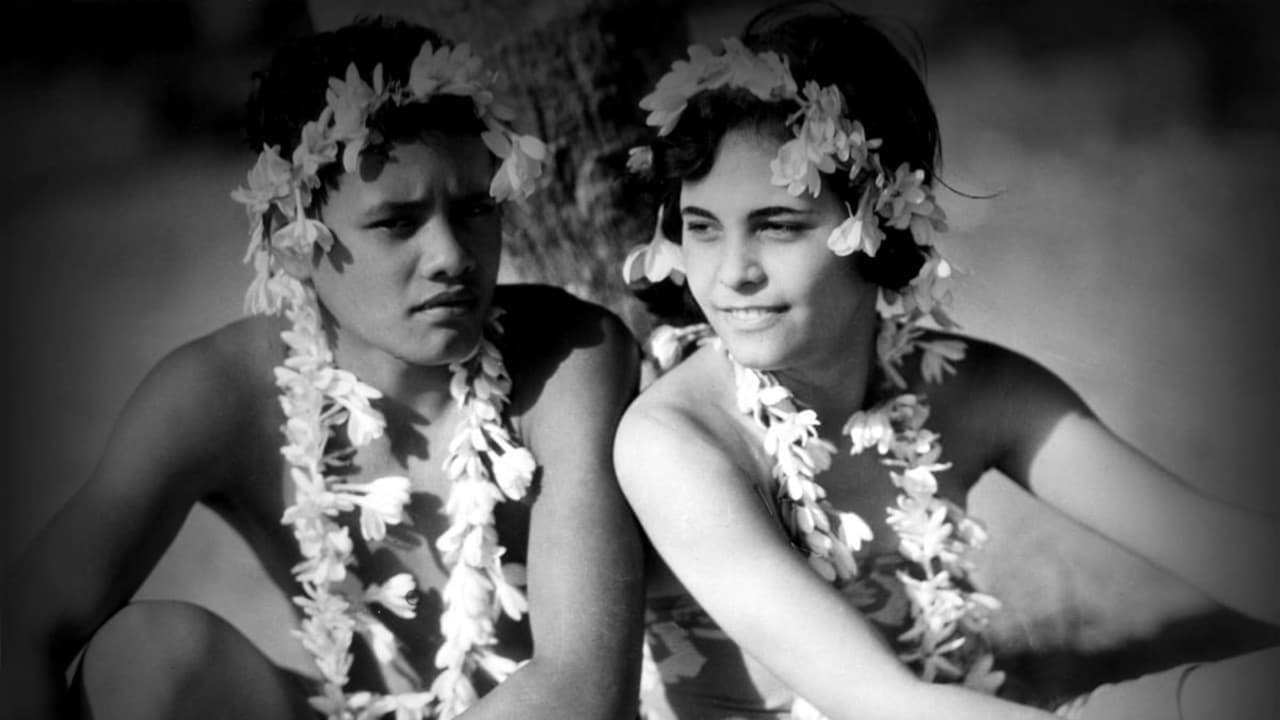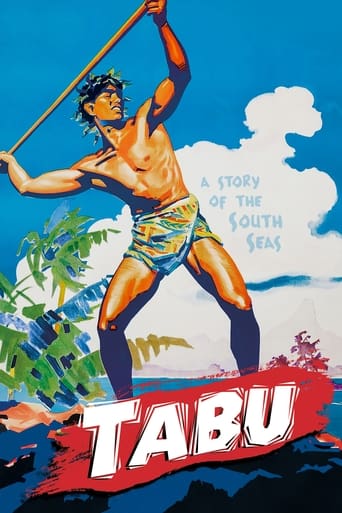

This was one of the titles listed in the book 1001 Movies You Must See Before You Die, I knew nothing about it, but having this recommendation I was willing to give this silent film a go and hope for the best, from director F.W. Murnau (Nosferatu, a Symphony of Horrors, The Last Laugh, Sunrise), his last film before his death. Basically, set on an island of Bora Bora lagoon, the maiden sacred to their gods has died and has been replaced by The Girl (Anne Chevalier), and young fisherman The Boy (Matahi) is in love with her, and vice versa, despite the fact that she must stay untouched. She is tabu (taboo), and if this rule about touching is broken she and her lover will be killed, but they go against the law of The Old Warrior (Hitu) and escape to an island ruled white men, where their gods do not rule over them. Being an excellent The Boy has collected many valuable pearls from the bottom of the sea, but he does not understand the concept of money, but when The Old Warrior is chasing him and The Girl they buy a ticket to travel to a new place, using money earned from pearls collected as part of a debt from shark infested restricted waters. But The Girl goes against him and hands herself in to The Old Warrior, returning to their island to spare the life of The Boy, and trying to follow, swimming the ocean after the boat and trying to reach the island himself he dies from exhaustion. Also starring Bill Bambridge as The Policeman. I will confess that I found it a bit difficult to follow, apart from the basic forbidden love story, but all the culture disputes and activities or events going on I slipped in and out with, it certainly looks good though with the locations, so I suppose it is not a bad silent drama. It won the Oscar for Best Cinematography. Worth watching!
... View MoreThe film-makers say at the outset that the cast consists entirely of South Sea Islanders, some Chinese, and "half-breeds." The story is a tragedy set in the "untouched" paradise of Rora-Rora. Matahi, a handsome youth gifted at spearfishing, pearl diving, and everything else, is in love with Reri (Ann Chevalier), but then she's chosen to be the next maiden whose task and honour it is to attend the gods. Sge is tabu; anybody who touches her or looks on her with desire must die. After the ceremony on the eve of her departure Matahi steals her away and they escape to another island, one more developed by colonial trade, represented by a French policeman and Chinese shopkeepers. Matahi, though the best pearl diver ever seen, runs up a prodigious debt innocently treating the villagers to champagne at a festival. Thus, when they need to escape from the grim pursuit carried on by the menacing Hitu, they cannot purchase a ticket on the schooner leaving just before the deadline of three days. Reri writes a note telling Matahi she's going with Hitu to save his life; at the same time he dives on a tabu reef, battles the shark that protects the place, and finds a rare dark pearlbut Reri's gone. He races after them, first paddling and then swimming, and he reaches Hitus' sailboat and grasps a rope, which Hitu, expressionless, cuts. Matahi falls behind the boat, and losing strength, flails and sinks. The tabu has been too powerful. This is a silent movie, though (later?) fitted with an orchestral soundtrack. The photography is superb, the islanders very handsome, but there's a kind of colonialist primitivism running through the story. The islanders are happy until "superstition" interferes, and though there are natural causes for the disasters blamed on the tabu, the disasters happen anyway. Or is it because of the cruelty of the superstitious religion's structure and enforcer? Or because of the exploitation of the pearl traders, shopkeepers, and police? There is no doubt that the European film-makers created artificial roles for the actors, according to their own preconceived ideas about the innocence of primitive life, even as they advertise their authenticity. But it's well worth watching anyway.
... View MoreFor discerning fans of classic filmmaking, the surviving work of director F.W. Murnau remains some of the most significant and stunning of the silent era. Filmed entirely in Tahiti, `Tabu' would prove to be Murnau's last film (he died in a tragic car accident on March 11, 1931, just weeks before the film's premiere) and most unusual - he actually collaborated with director Robert Flaherty (`Nanook of the North') in this tale of two doomed lovers that unintentionally transports `Romeo and Juliet' into the South Pacific. Unlike his landmark expressionist titles such as `Nosferatu' and `Faust,' Murnau's `Tabu' is set mostly outdoors and features dazzling images of beautiful young native men and women at home in their Polynesian paradise in the first part of the film, with haunting images used to chronicle tragedy and paradise lost in the second half of the 81 minute classic.Although no members of the cast were professional actors, the performances by Matahi (as a young pearl fisherman) and Reri (as the `tabu' island girl) are moving. More than 70 years after its release, `Tabu' remains essential viewing, and UCLA's restoration of this classic has been a highlight of the schedule of new DVD releases in 2002. In fact, the film's luxurious black-and-white cinematography garnered cameraman Floyd Crosby an Oscar. DVD extras include audio commentary by UCLA Film Professor Janet Bergstrom; outtake footage; theatrical trailer; still gallery; short film titled `Reri in New York.'
... View MorePeople with prejudice against silent films should see "Tabu"; it´s a masterpiece of cinema. The storyline is superb, a struggle not between good and evil, but between human will and fate; there´s a beautiful love story of natives of the South Seas, mystery and suspense; and, to boot, some of the most wonderful sights you´ve ever seen in a b&w flick. The anthropological genius of Robert O´Flaherty, and the creativeness of F.W. Murnau cannot be denied; this is the meeting of two movie titans.
... View More